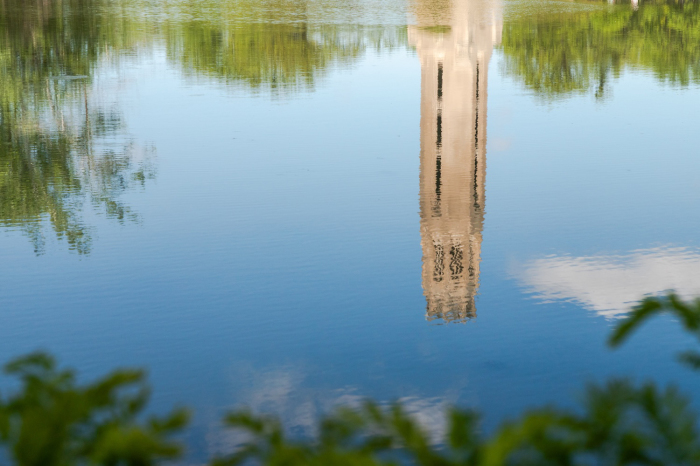Travel: Detroit once again rises from the ashes

In 1805, a fire swept through Detroit, destroying a small frontier town that had been founded at the beginning of the previous century by the French, acquired through colonial wars by the British and only under American control for nine years. Two hundred and nineteen years later, the city’s Latin motto still speaks of rising from the ashes of that fire.
Detroit would go on to become one of the all-time great American cities. But over time, a combination of factors — the dominance of cars the city famously once-exported, the rise of suburbs, race, bad government, the decline of American industry — led to its collapse. In the 60 years between 1950, when Detroit was the fourth-biggest city and the country’s wealthiest, and 2010, the population dropped by more than 60%.
While countless articles have boasted of the city’s comeback since its infamous 2013 bankruptcy, some of the claims were exaggerated and overlooked serious problems. And while many problems still exist, there’s no question that Detroit is once again back from the ashes.
One of the best indicators is the people moving here. For the first time since the late 1950s, the U.S. Census Bureau has reported population growth.
Between 2022 and 2023, about 2,000 new residents were added, increasing the population to 633,218 and making Detroit the 26th biggest city, according to the census numbers.
Admittedly, the numbers are modest, but growth at any level is actually a very big deal. In a city that lost hundreds of thousands of souls in the lifetime of many readers, the fact that people are committing to a place that just a few years ago was seen as an apocalyptic or post-apocalyptic urban wasteland is notable.
Sure, downtown offices could be busier — commercial real estate occupancy continues to be a major problem for cities everywhere — and, yes, Detroit probably still depends too much on sports and other big events to attract visitors. But compared to how things were just a few short years ago, the comeback is real. It can definitely be felt on a walk around downtown or a drive past the soon-to-open Ford Motor Co. office in the restored Michigan Central Station.

One area where the growth is visibly evident is in and around Brush Park, a couple blocks off Woodward Avenue, one of Detroit’s main drags, and not far from the professional baseball and football stadiums by St. John’s Church.
The Episcopal church, which, for full disclosure, I attended years ago, is a typical example of Victorian Gothic revival style. Many of its congregants lived in Brush Park, where some mansions in the Second Empire and Greek revival styles still stand. Those who didn’t attend St. John’s went to any number of other churches, as every respectable denomination and sect of postbellum society, including the Unitarians, were represented.
At the time of city hall’s bankruptcy, much of the neighborhood was empty. The decaying mansions were popular with photographers shooting Detroit’s ruins.
Little by little, the stately old houses were restored. New apartments and condos were built. Real estate prices have since soared, at least relative to what they were just a few years ago. Today, Brush Park, like elsewhere in Detroit, is barely recognizable.
If you go
Summer and early fall are the best times to visit, as you can walk along the Detroit River, which serves as a border with Canada, or spend most of a day at Belle Isle, a 985-acre state park and one of the best urban parks anywhere in the country.
Belle Isle’s most prominent landmark is the 99-year-old James Scott Memorial Fountain. The beaux-arts fountain wouldn’t be out of place in Paris. Somewhat overlooked by the Instagram set is the Nancy Brown Peace Carillon, a Gothic revival bell tower that, at first glance, could be the ruins of some medieval abbey.
Then there’s Eastern Market, which has great people watching at the main market on Saturday mornings. Nearby is St. Joseph’s. Another example of Gothic revival, it has superb stained-glass windows. Once a parish for German Roman Catholics, it’s become a niche church for traditionalist Catholics who worship using the old Latin liturgy.
For those on a crawl of spires and crosses, I’d skip the two cathedrals, the Cathedral Church of St. Paul (Episcopal) and Cathedral of the Most Blessed Sacrament (Roman Catholic). They just aren’t that notable.
Instead, the old neighborhood churches are more interesting. The Basilica of Ste. Anne de Detroit, which as a congregation was established shortly after the French founded Detroit in 1701, is the most historic. The current edifice, a handsome brick structure, dates to the late 1800s. The former Trumbull Avenue Presbyterian Church is notable for its Venetian-inspired architecture. Across the street is another closed church, Trinity Episcopal Church. Looking like it's straight from the English countryside, this is probably the city’s best and most authentic example of Gothic revival architecture. Back on Woodward Avenue, the still-open First Congregational Church, designed in Romanesque Revival, houses the Underground Railroad Living Museum.
The Detroit Institute of Arts and Detroit Historical Museum are worth visiting, especially on Friday when the art museum stays open until 9 p.m. The hours on other days aren’t that convenient.
I booked a room through Airbnb. You could do the same. If you prefer a hotel experience, the Shinola and Detroit Foundation hotels are the places to stay.
Dennis Lennox writes a travel column for The Christian Post.
Dennis Lennox writes about travel, politics and religious affairs. He has been published in the Financial Times, Independent, The Detroit News, Toronto Sun and other publications. Follow @dennislennox on Twitter.





























